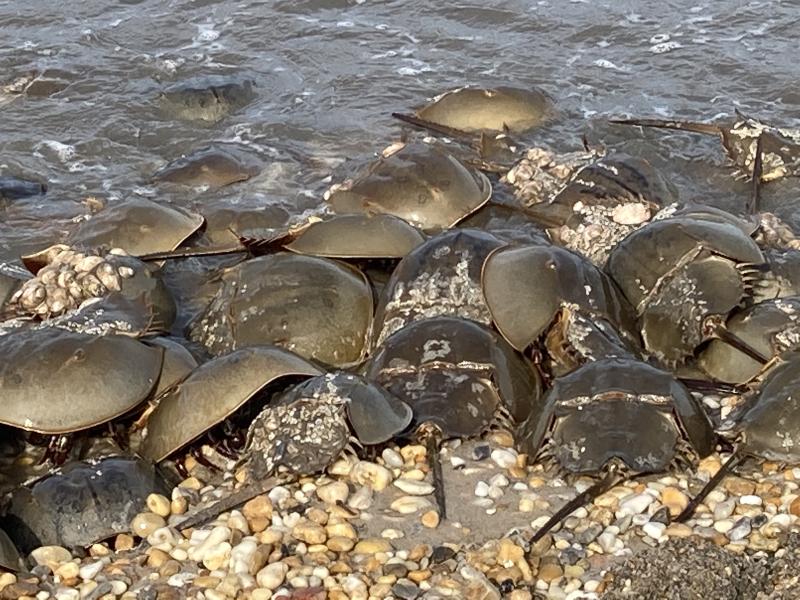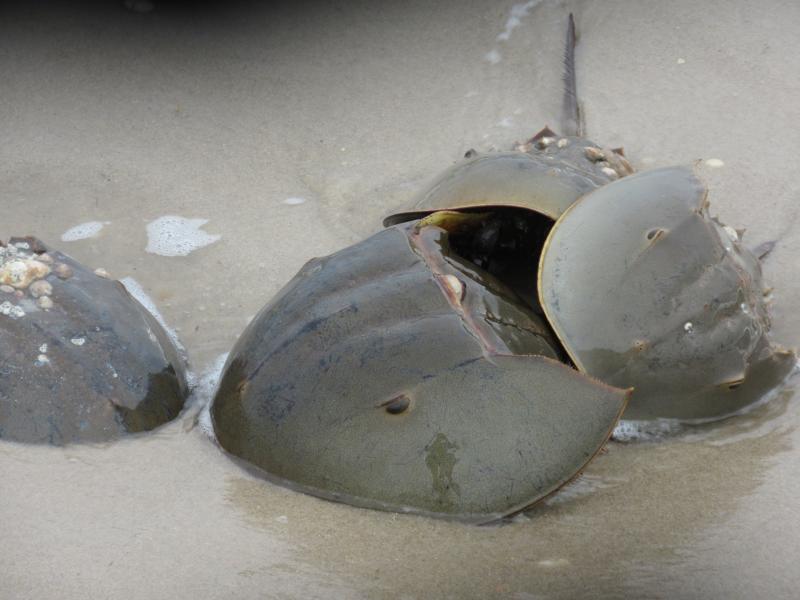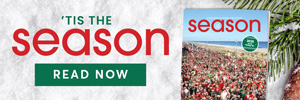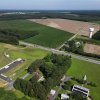Horseshoe crabs support migrating shorebirds, local marine life
At Slaughter Beach in mid-May, there is nothing that compares to a morning walk, except perhaps a moonlight wade in the bay. Under the early cover of fog, a cacophony of sounds hints at the frenzy of activity. As the salt brine tickles each breath and the sun breaks over a golden, pebbled beach, I bear witness to an ancient and impressive ecological event. Hundreds of migrating shorebirds navigate between armored crabs buried in the sand. Imagine the competition at a crowded buffet, elbows and chatter, as the birds feast on fat-rich eggs at their feet. Turn back the clock to the previous midnight. Gentle giants bump into your boots in the shallows under the moon’s filtered light. Wall-to-wall horseshoe crabs climb over each other, out of the water and lumber toward the highest point on the beach to spawn. Most of the horseshoe crabs retreat with the outgoing tide, leaving the morning and some of their eggs to the shorebirds.
The Atlantic horseshoe crab (Limulus polyphemus) predates the dinosaurs and is considered a “living fossil.” This species is found from Maine to Florida, with the highest population counts and largest spawning area in the world on the shores of Delaware Bay. Built like an armored tank, but not a true crab, it has three distinct body parts: cephalothorax, abdomen and telson (tail). The rounded, horseshoe-shaped cephalothorax has seven “eyes” or photoreceptors, which are sensitive to visible and ultraviolet light (by day and night), on the top shell. There are also light sensors along the top and side of the telson that enable the crab to navigate to the shore during peak high tides in May and June.
During breeding survey observations, smaller male crabs appear to outnumber females 4-1, as they cruise the shoreline waiting for a large, egg-bearing female. A male horseshoe crab has a pair of front claws, each with a distinct boxing glove-shaped hook, to latch on to the female. A large female, dragging an attached male to fertilize the eggs, follows an ancient instinct to deposit her cluster of 4,000 greenish-blue eggs, about the size of small peppercorns, in a shallow depression high above the waves. In one season, one female may visit the beach 20 times, leaving a total of 80,000 eggs! The egg math is exponentially mind-blowing, reaching the gazillions. Covered in one to two inches of sand, many of these eggs hatch quarter-size horseshoe crabs in 14 days.
Waves and storms expose many (not all) eggs to hungry avian, fish and marine species. After a nonstop flight from South America, many shorebird species have synced their arrival with the spawning season of the Atlantic horseshoe crab. Each spring, between 450,000 and 1 million migrating shorebirds follow the Atlantic Flyway and stop in our Delaware Bay estuary. Visit the DuPont Nature Center on the Mispillion Harbor east of Milford to watch ruddy turnstones, short-billed dowitchers, red knots, sanderlings and semipalmated sandpipers feast for two to three weeks on the fat- and protein-rich horseshoe crab eggs before continuing their journey north to the Arctic to nest. For more information about each shorebird species, visit atlanticflywayshorebirds.org.
Directly supporting local fish species, the eggs washed into Delaware Bay and the Inland Bays are consumed throughout the spring and summer by striped bass, white perch, and baitfish such as killifish and silversides. In addition to the eggs, many saltwater species feed on the young hatchlings. As part of an extensive food pyramid, horseshoe crab offspring feed summer and winter flounder, American eels, blue crabs and loggerhead sea turtles.
In 1998, the Ecological Research and Development Group, and local Horseshoe Crab Sanctuary communities initiated the Just Flip ‘Em campaign to help stranded crabs. You can help!! Do firmly cradle the rounded cephalothorax between your two hands and turn it over. Place the crab in the water or in the damp sand. The underside is formidable looking, but harmless. You can gently tickle the claws and bristles that form the mouth with your fingers without worry. On the abdomen, examine the book gills that need to stay moist. Avoid placing your hands in the slit joining the abdomen because the horseshoe crab can fold and pinch. Please do not pick up the crab by the telson. Join friends at Broadkill Beach and Slaughter Beach on Delaware Bay, and Camp Arrowhead on Rehoboth Bay, who have declared their shared habitat a horseshoe crab conservation area!

























































